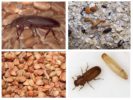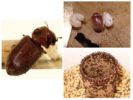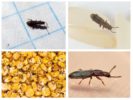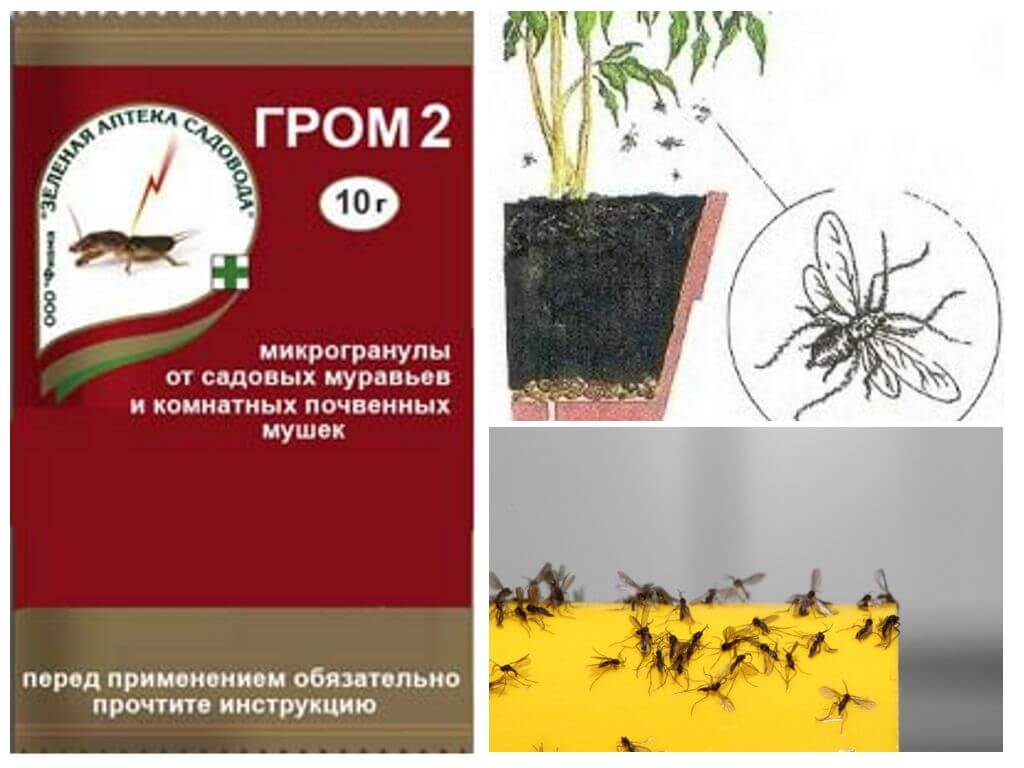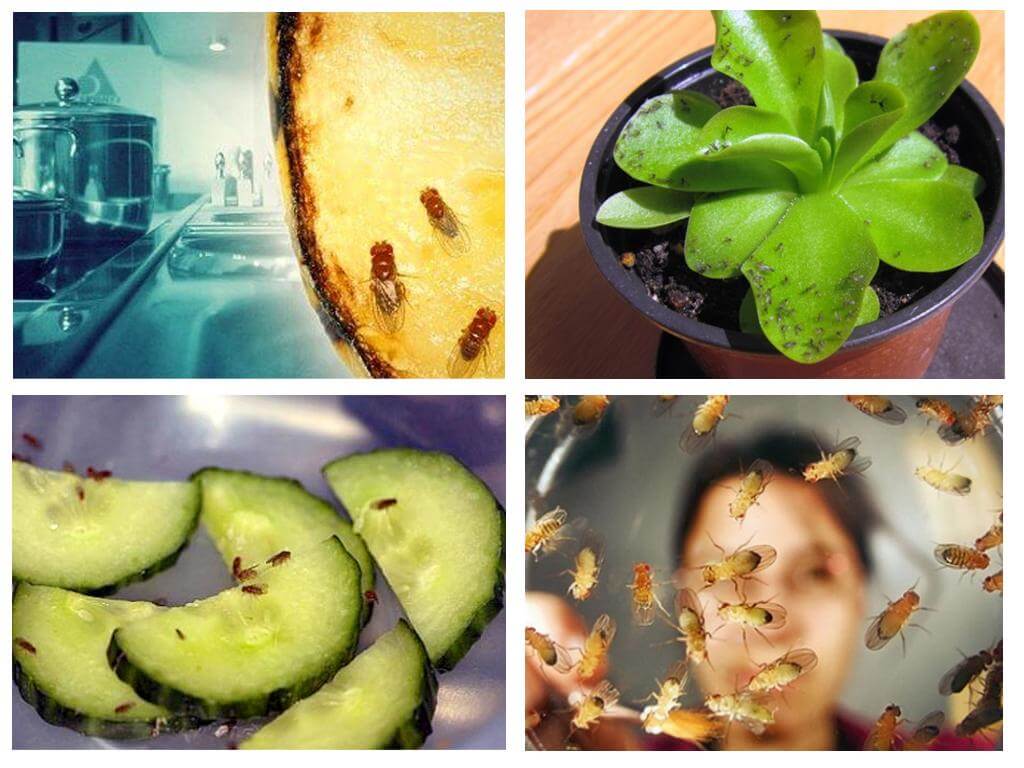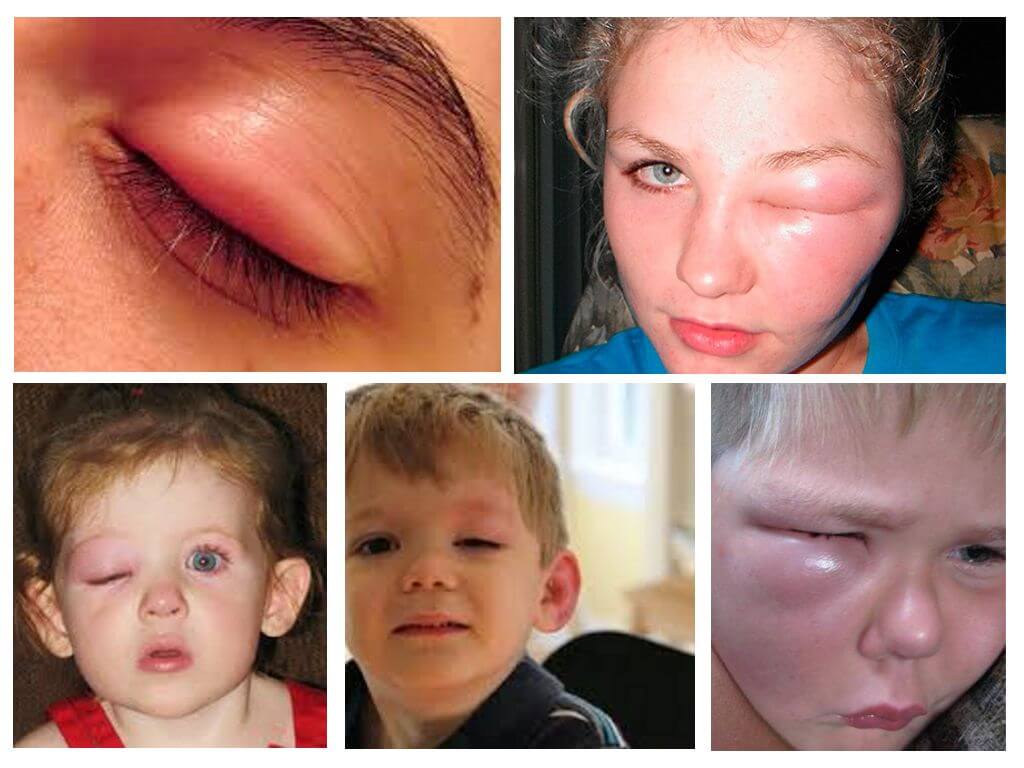- Khrushchak
- Bread grinder
- Mucoeater
Where do bugs and midges come from in cereals? What to do if they are wound up in one of the packages or even all at once.
Reasons for the appearance
It is especially unclear where the midges in flour come from for those housewives who conduct daily thorough cleaning in the kitchen. But you don’t need to feel guilty or doubt your own cleanliness. Most often, bugs or midges in the closet appear because the hygiene of the products is violated even at the time of packaging or packaging: some manufacturers do not carry out the required processing or store in inappropriate conditions. And even the purchase of expensive, carefully packaged products does not guarantee the absence of insects.
Squirrels in flour, rice and other things can start from a bag infected with a pest. Moreover, this will not necessarily be cereals, but there may also be tea, coffee or spices.
What midges are there in cereals
If midges are not populated by all products, it will be difficult to detect them, but when their density increases, they will crawl along the floor, walls and windows. Before applying funds from midges in the apartment, you need to find the source of infection. It is easy to understand that there are insects in cereals if a characteristic pattern is visible on the surface of the flour. Cats can eat flour, various types of cereals, starch, grain, tea and many other products.
The use of such products in food threatens health problems, they must be removed in the trash. The main pests in the apartment in the kitchen are the Khrushchak and the bread grinder.
Khrushchak
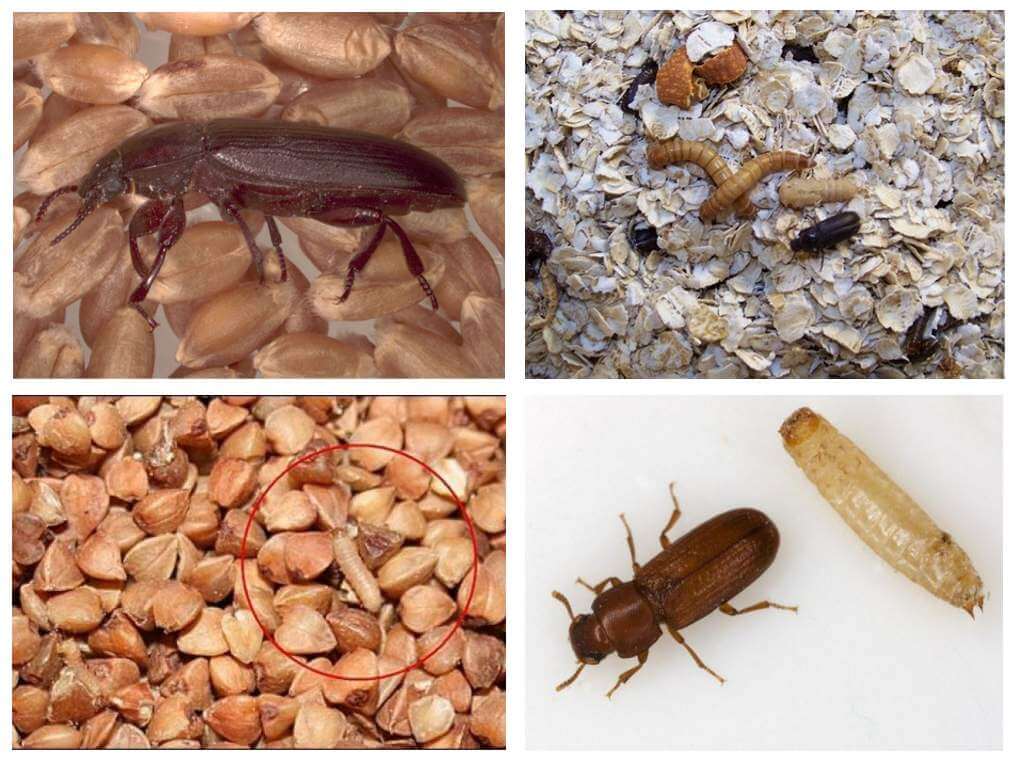
Puppies in rice, buckwheat or other cereals - most often these are bugs of a very small size, brownish, with short mustaches and wings.
This small bug may appear from flour or starch brought from the store. From these packages, he is able to crawl throughout the kitchen, looking for the most suitable food. Most of all they like flour, semolina, buckwheat and rice groats, dried fruits, millet.
There is no way to eat the product in which the beetle beetle wound up - violation of this rule threatens with allergic reactions, poisoning, diarrhea.
Bread grinder
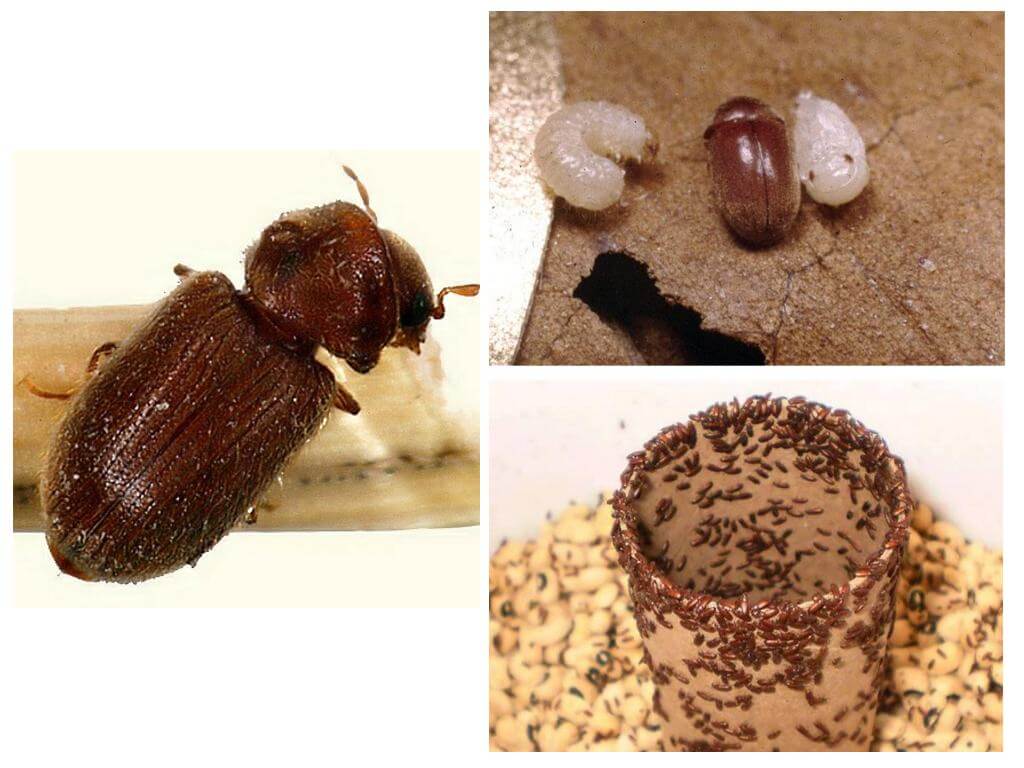
Often in cereals you can find extremely prolific, tenacious and gluttonous pests - bread grinders. It is very difficult to get them out; this requires a maximum of patience, methodology and thoroughness.
Sometimes these midges in pasta breed to such an extent that they begin to appear on window sills or on the floor. They prefer to eat flour, grain, tea, nuts and dried fruits. Do not disdain tobacco and medicinal plants, including poisonous ones.
You can notice the presence of midges in pasta not only directly in the product, but even looking at the roots of books or herbaria, in which the grinder makes moves and crap.
Mucoeater
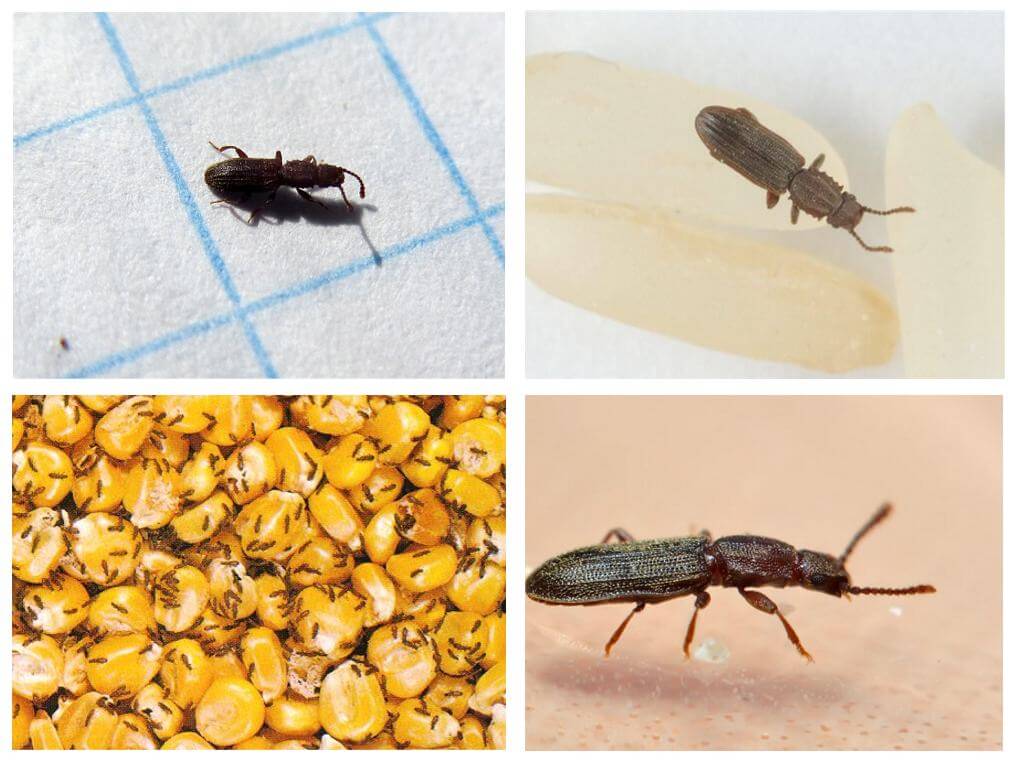
Sometimes there are midges in rice that got here during processing at industrial enterprises. Small winged insects have short hairs and long antennae.
These midges prefer rather moist products, therefore they start in rotting cereals, flour, animal feed.When packaged, they increase the moisture content of cereals or flour, polluting them with their bowel movements and “covers” from larvae.
How to get rid of midges in cereals in the kitchen
If there are not too many midges, it is necessary to sift the cereal or flour through a sieve or dig it, and then heat it in the oven at a temperature of about 100 degrees - this is so get rid of midges in the kitchen. Before eating cereals, soak it in salt water and rinse well.
If there are too many insects, the croup will have to be thrown away so as not to pose a threat to the body.
After the flour and other infected products are thrown away, preventive work must be carried out using remedies for midges.
Regardless of where the gnats come from, the following should be done to get rid of them:
- Throw away all packaging in which products were stored. Instead, it is better to purchase sealed dishes made of plastic or glass;
- If the damaged products were in jars, they should be thoroughly washed with soap, keeping in a soap solution for 30 minutes. Then rinse and dry thoroughly;
- Inspect all products, looking for signs of infection by midges;
- To freeze those products in which insects are not found, freeze in the freezer for up to 48 hours;
- Wash all cabinets, tables, windows, floors and window sills in the kitchen with soap and soda, and wipe with a solution of vinegar;
- Pour boiling water over the cracks in the tables and floors, the joints in the cabinets, the valves and fittings.
How to prevent occurrence
What to do if midges are wound up and how to get them out is understandable. But what to do to prevent midges from appearing at all in the house?
- All purchased cereals or flour should be baked in the oven for about 15 minutes. Store in a well-closed container.
- Do not purchase a stock of cereals “for a rainy day”.
- Put unpeeled garlic in a bowl of flour or cereal.
- Wipe cabinets with acetic solution weekly.
So, knowing what causes gnats in cereals, and regularly conducting preventive measures, you can never meet with cereal and flour scourge.
